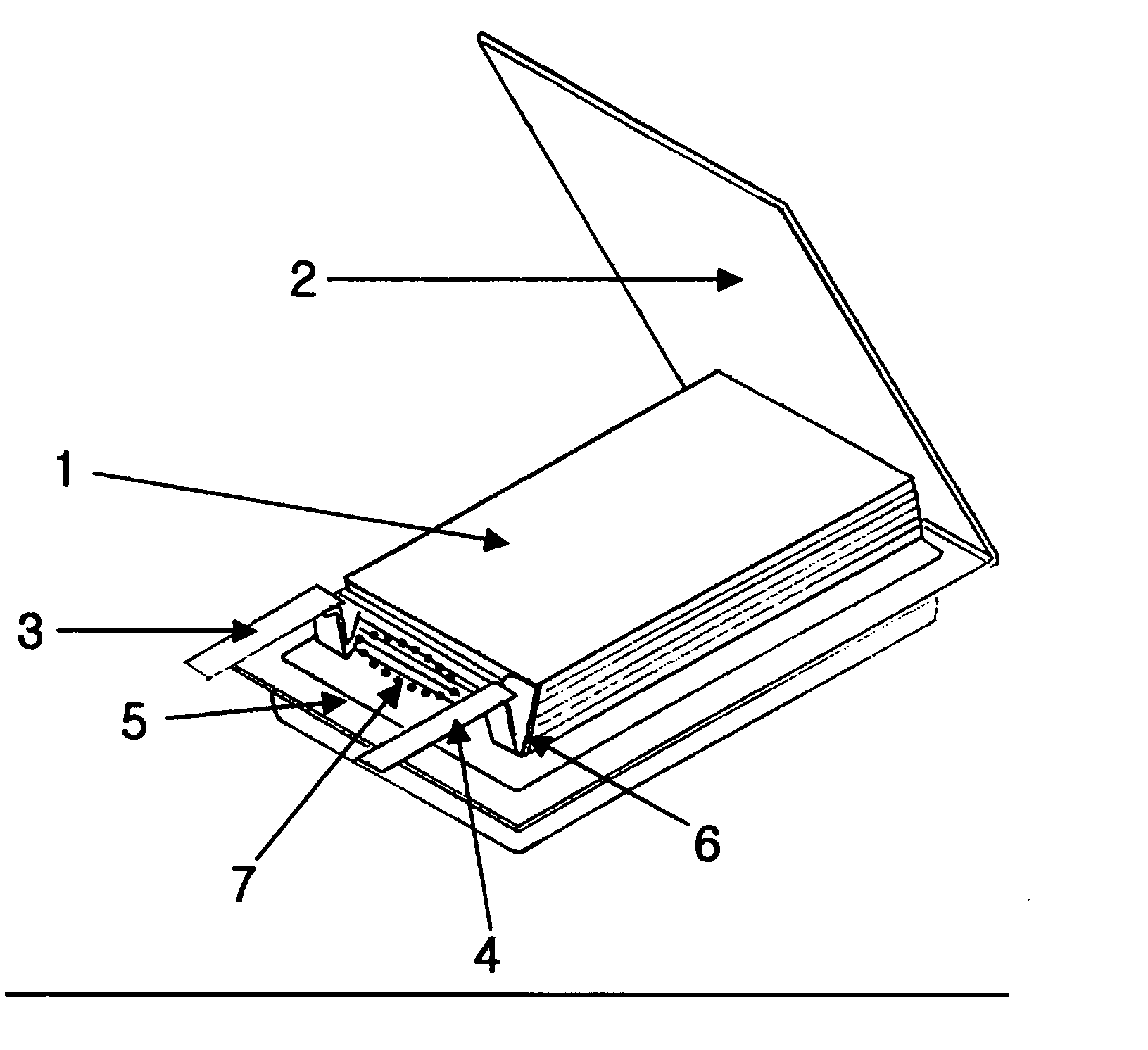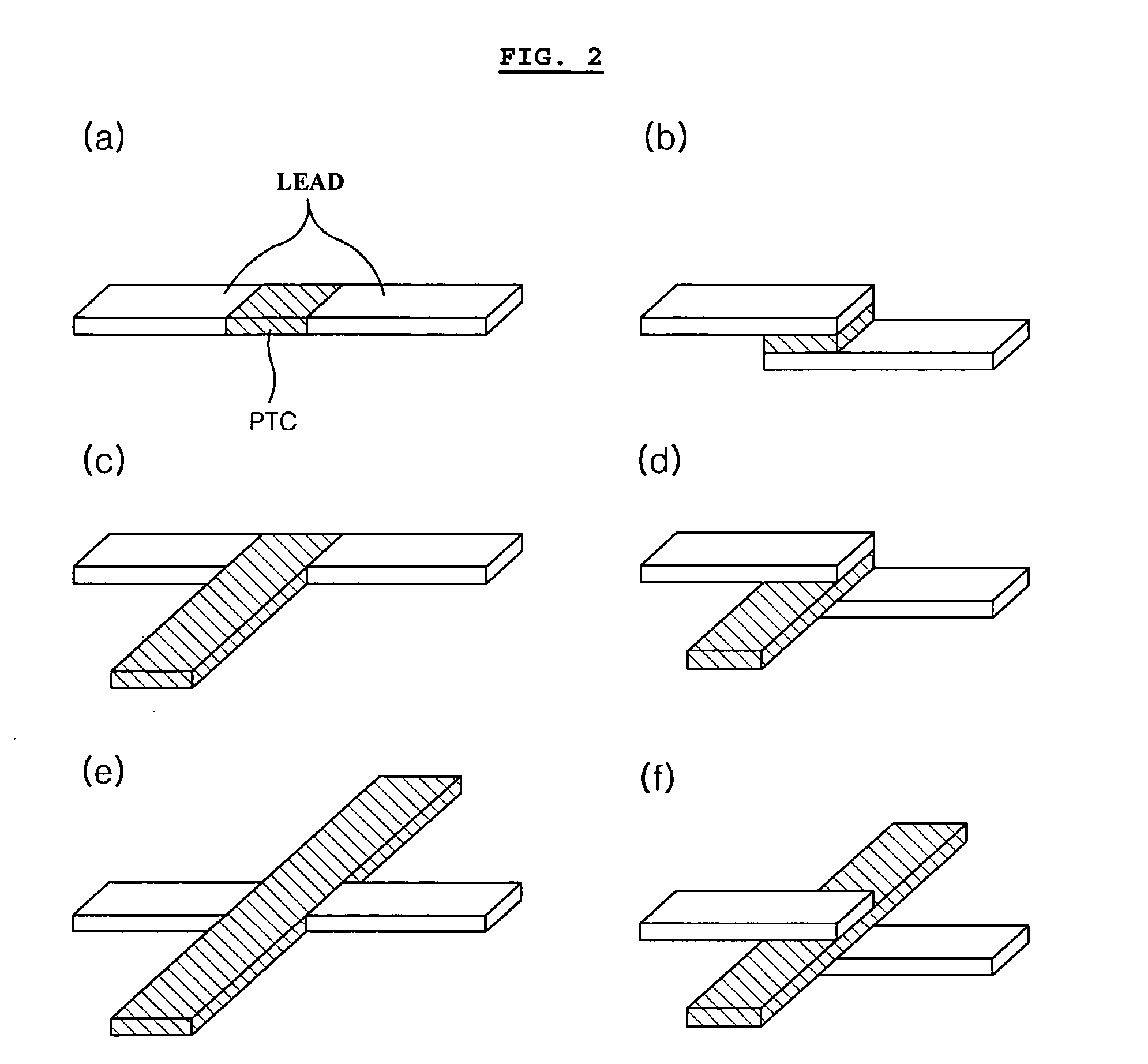Electrochemical device comprising electrode lead having protection device
a protection device and electrode lead technology, applied in the direction of primary cell maintenance/servicing, batteries, cell components, etc., can solve the problems of battery explosion, low capacity of lithium polymer batteries developed up to date, complex manufacturing processes, etc., and achieve the effect of minimizing the drop in energy density per volum
- Summary
- Abstract
- Description
- Claims
- Application Information
AI Technical Summary
Benefits of technology
Problems solved by technology
Method used
Image
Examples
example 1
[0061] The same lithium ion polymer secondary battery available from LG Chem., Ltd. and the same PTC device available from LG Cable Co. as Comparative Example 1 were used. In this Example, the PTC device was heat sealed with a cathode lead to provide the form as shown in FIG. 2b. Then, the battery was enclosed with a pouch-type casing in such a manner that the PTC portion is present at the inner sealing region of the casing as shown in FIG. 5.
example 2
[0062] The same lithium ion polymer secondary battery available from LG Chem., Ltd. and the same PTC device available from LG Cable Co. as Comparative Example 1 were used. Similarly, the PTC device was heat sealed with a cathode lead to provide the form as shown in FIG. 2b. Then, the battery was enclosed with a pouch-type casing in such a manner that the PTC portion is present inside of the casing as shown in FIG. 6a. Particularly, in order to minimize the loss of energy density, the lead was folded so that the PTC sheet is disposed between the stacked surface (surface having the lead) of the electrode assembly and the casing. Additionally, the lead was insulated by using an imide film so as to prevent interconnection between leads (see, FIG. 6a).
example 3
[0063] The same lithium ion polymer secondary battery available from LG Chem., Ltd. and the same PTC device available from LG Cable Co. as Comparative Example. 1 were used. Similarly, the PTC device was heat sealed with a cathode lead to provide the form as shown in FIG. 2d. Then, the battery was enclosed with a pouch-type casing in such a manner that the extended portion of the PTC sheet is present between the cathode tab and anode tab. Additionally, the PTC sheet was coated with a polymer so as to prevent breakage of the PTC layer caused by infiltration of electrolyte.
PUM
| Property | Measurement | Unit |
|---|---|---|
| voltage | aaaaa | aaaaa |
| temperature | aaaaa | aaaaa |
| temperature | aaaaa | aaaaa |
Abstract
Description
Claims
Application Information
 Login to View More
Login to View More - R&D
- Intellectual Property
- Life Sciences
- Materials
- Tech Scout
- Unparalleled Data Quality
- Higher Quality Content
- 60% Fewer Hallucinations
Browse by: Latest US Patents, China's latest patents, Technical Efficacy Thesaurus, Application Domain, Technology Topic, Popular Technical Reports.
© 2025 PatSnap. All rights reserved.Legal|Privacy policy|Modern Slavery Act Transparency Statement|Sitemap|About US| Contact US: help@patsnap.com



